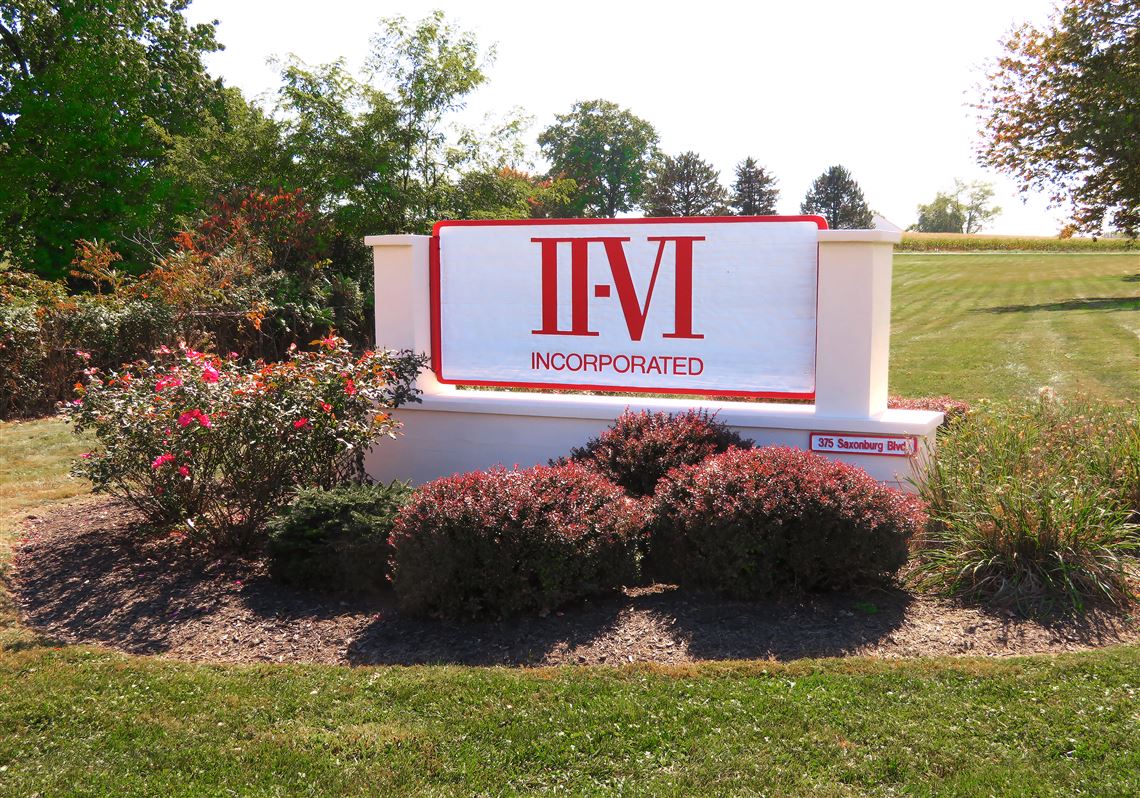A year after reporting more than $2 billion in revenue for the first time, II-VI passed another billion dollar milestone.
The Saxonburg-based company that creates tech for things ranging from electric vehicles to 3D sensing to 5G deployment reported Tuesday it had $3.1 billion in revenue for its fiscal year ending June 2021.
“Any which way we look at it, [fiscal year] 2021 was just an amazing year,” said Giovanni Barbarossa, chief strategy officer. “We look forward to what’s to come in FY 2022 as we start our next 50 years.”
Founded in 1971, II-VI marked its 50th anniversary this year with plans to expand philanthropic and business endeavors, particularly related to sustainability initiatives.
In January, it pledged $1 million to support environmental, social and governance, or ESG initiatives, as well as science and technology education. In April, it announced it would expand its physical footprint — starting in China — to produce the materials needed to power electric vehicles and other clean energy applications. On Tuesday, company officials said II-VI expects to invest $1 billion over the next decade in semiconductor materials, including silicon carbide, used for electric vehicles and solar and wind energy generation.
CEO Vincent Mattera said the investments will “enable the acceleration of the electrification of the global transportation infrastructure.”
Silicon carbide material can increase the driving range of an electric vehicle by 10% on a single charge, company officials said in April when II-VI announced it would expand headquarters in China to meet the demand for those materials.
Silicon carbide business currently makes up less than 5% of the company’s revenue but II-VI expects it to become “one of the largest businesses in our company inside 10 years,” Mr. Mattera said.
In the next quarter, which ends in September, II-VI expects to invest up to $20 million to expand work on compound semiconductors, a type of semiconductor that includes more than one element. Most of that investment would go toward silicon carbide materials.
In the next five to 10 years, it also plans to expand its operations in the United States to produce more of the materials.
After reporting a loss of $67 million, or 79 cents per share, for fiscal year 2020, II-VI reported Tuesday net earnings of $297 million, or $2.37 per share, in fiscal year 2021.
In the fourth quarter, which ended in June, net earnings were up to $82.3 million, or 59 cents per share, compared to $81.1 million, or 66 cents per share, for the third quarter.
II-VI reported revenue grew in the fourth quarter to $808 million, up from $783 million for the quarter that ended in March.
Year over year, revenue jumped from $2.3 billion in June 2020 to $3.1 billion this June.
By the end of next quarter, II-VI expects to bring in between $780 million and $830 million in revenue.
Entering what company officials called the “fourth surge” of the COVID-19 pandemic, II-VI said it incurred $4 million of COVID-related expenses this quarter, including lost work time and overtime.
II-VI also absorbed $3.3 million in costs to deal with supply chain shortages. But officials said it successfully stopped the worst of the impacts: It estimated its revenue could have been affected by as much as $40 million due to supply chain disruptions.
“Supply chain challenges remain daunting,” said II-IV’s president, Walter Bashaw. The company, he said, is managing “24/7 as an all-hands-on-deck effort to secure our fair share of capacity at our suppliers.”
“During the quarter, our supply chain and operations team collaborated and again averted the potential impact of protracted supply chain issues,” Mr. Mattera said. “Once again our employees made things happen and got the job done.”
This year, communications revenue was up 11% compared to 2020. Consumer electronics, including 3D sensing technology, doubled revenue while life sciences revenue grew 65% in support of COVID and other diagnostic testing.
The company is still fully operational at its more than 70 facilities worldwide, though most administrative staff are working remotely, Mr. Bashaw said. It has more than 22,000 employees in 18 countries.
II-VI is keeping an eye out for disruptions from quarantines and other safety measures, particularly in Malaysia, Vietnam and the Philippines.
China accounted for about 23% of the company’s revenue this quarter, according to an investor presentation Tuesday. Europe accounts for 19% and Japan for 6% while North America makes up the majority of revenue at 49%.
In February, II-VI made a bid to acquire Coherent Inc., a Santa Clara, Calif. provider of lasers and laser-based technology that works in scientific, commercial and industrial sectors. The $6.5 billion bid was one of three that Coherent fielded this year. II-VI edged out its competitors in March 2021 after revising its offer to include fully committed debt financing and a $1.5 billion equity investment.
The deal, which is expected to close in the first calendar quarter of 2022, is meant to accelerate technology for electric vehicle production lines, laser additive manufacturing and aerospace, defense and life sciences applications, company officials said in March.
Mr. Mattera said Tuesday he has met individually with 25 of Coherent’s top executives and has “started our flywheels turning.”
In its most recent earnings call, II-VI rolled the cost of the integration into “other costs” that it estimated would be between $11 and $15 million.
Lauren Rosenblatt: lrosenblatt@post-gazette.com, 412-263-1565.
First Published: August 10, 2021, 8:38 p.m.















